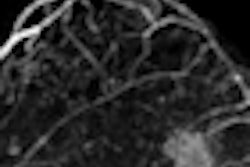
NEW YORK (Reuters Health) - Intrapartum translabial ultrasound (ITU) appears to be an effective way to monitor birth progress in term fetuses in cephalic presentation, researchers report in BJOG online November 18.
"Giving birth is a natural process, but sometimes requires urgent medical intervention. We showed that ITU provides objective and reproducible assessment of labor progress by relatively simple means," Dr. Boris Tutschek told Reuters Health by e-mail
The approach has recently been used to study the progress of labor and to predict vaginal delivery. In fact, "the general principle has even been implemented in a commercial ultrasound system."
However, Dr. Tutschek of Universitats-Frauenklinik, Bern, Switzerland, and colleagues note the correlations of the different parameters during normal term labor haven't been comprehensively studied.
To do so, the team used ITU to study 50 women with normal singleton pregnancies. Most were in the second stage of normal spontaneous labor.
The managing obstetrician or midwife, who was blinded to the results of the ITU, performed vaginal exams after each ITU exam.
There was good repeatability for ITU "head station," "angle of descent" and "head direction" -- both for individual and different examiners.
Angle of descent and head station were interchangeable, and could be calculated from each other. The head station and head direction changed in a typical pattern along the birth canal and time to delivery correlated with ITU head station.
The researchers note that "digital vaginal examination of head station and head position in labor is operator dependent, and is poorly reproducible. Our data suggest that ITU-measured head station may be more accurate than digital vaginal examination, which cannot quantify subtle differences in head station."
The researchers call for further studies, but conclude, "Our new data may improve our understanding of normal and abnormal labor, enable objective measurement of birth progress, and provide a more scientific basis for assessing labor."
Moreover, concluded Dr. Tutschek, "Our findings may improve the safety of assisted birth."
By David Douglas
Source: http://link.reuters.com/kuf43r
BJOG 2010.
Last Updated: 2010-12-28 10:00:33 -0400 (Reuters Health)
Related Reading
MR images capture birth process, December 8, 2010
Copyright © 2010 Reuters Limited. All rights reserved. Republication or redistribution of Reuters content, including by framing or similar means, is expressly prohibited without the prior written consent of Reuters. Reuters shall not be liable for any errors or delays in the content, or for any actions taken in reliance thereon. Reuters and the Reuters sphere logo are registered trademarks and trademarks of the Reuters group of companies around the world.

















